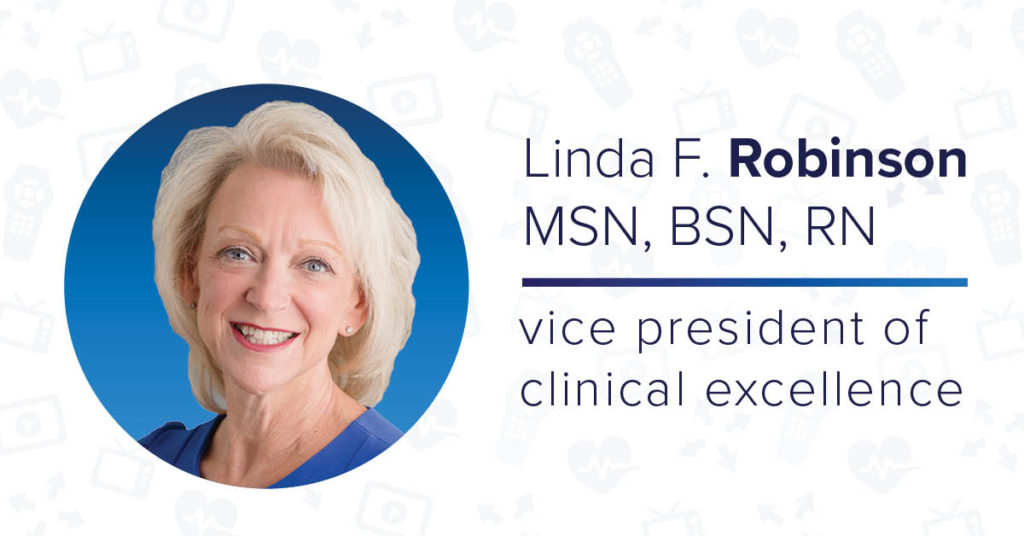
The Agency for Healthcare Research and Quality makes an important distinction: that patient experience is not the same as patient satisfaction (although the concepts are related).
Patient satisfaction focuses on a person’s expectations and to what degree they were met. So, two different people could receive the same care but, because of their differing expectations, can have different levels of satisfaction.
Patient experience, meanwhile, focuses on the interactions they have with the healthcare system: doctors, nurses, and more. These range from the patient’s ability to seamlessly get timely appointments, information, and more. In other words, improving the patient experience is in your control while patient satisfaction is connected to the experience but is filtered through each individual patient’s perspective.
When evaluating your patient experience delivery at your facilities, focus on how well the patients receive “care that is respectful of and responsive to individual patient preferences, needs and values.”
Now, here are six reasons why your facility should focus on patient experience.

#1 The Right Thing to Do
Short and simple! Providing a quality patient experience is the right thing to do.
#2 Better Health Outcomes
Quality experiences can lead to more positive health reports. One study focuses on people hospitalized because of a heart attack—and a year after discharge, they have, on average, more positive outcomes if their patient experience was positive.
#3 Patient Loyalty
Just like with any other type of relationship, patients are more loyal to their healthcare providers when they receive a good experience. One study shows that patients who received the lowest quality of experience were three times more likely to switch physicians than those who received the highest quality.
#4 Staff Satisfaction / Lower Turnover
Healthcare staff don’t want to provide a poor quality experience for their patients. When healthcare facilities provide their clinicians and other employees with what they need to provide better care, they’re more likely to stay. One hospital focusing on improving work-related systems and processes reduced employee turnover by 4.7 percent.
# 5 Reduced Malpractice Rates
One study shows that, as the quality of patient experience drops, the chances of being named in a malpractice suit increases. When using patient-reported scores to calibrate this, each one-point drop in scoring increases the risk of a lawsuit by 21.7 percent. Looked at from the opposite perspective, the risk of a lawsuit drops by that amount each time that satisfaction with the patient experience increases.
#6 People Value Engaging Patient Education
According to a National Research Corporation (NRC) survey, cited by the National Library of Medicine, patients value physicians who explain things well. In fact, that’s the most important criterion for choosing a doctor. Poor levels of patient education can lead to unrealistic expectations—and then dissatisfaction when expectations aren’t met.

Lack of Physician Time
In a national survey by The Physicians Foundation, only 11 percent of patients felt as though they had enough time in a physician-patient appointment to receive the highest standards of care. (Fourteen percent of physicians said the same thing.) So, on the one hand, 90 percent of patients believe that a solid relationship between a patient and physician is the “most essential element of a quality health care system,” but time is clearly being perceived as a significant barrier.
The solution: interactive patient education.
Components of Interactive Patient Education
Interactive patient education makes educational resources available to patients at their bedsides. This information can be delivered in the hospital as well as in a discharged patient’s home through interactive technologies, and educational materials are targeted to the patient’s specific conditions and treatments.
Interactive patient education is, as the name implies, interactive—and it’s also patient-centric, providing numerous benefits.
Benefits of Patient-Centric Care
Healthcare services that put the patient in the center—such as what can happen when quality patient education technology is used—lead to better informed patients. This, in turn, allows them to better understand their health conditions and treatment options, leading to better decision making by the patient.
Benefits continue from there. People who receive interactive patient education are more likely to consistently follow their treatment plans while being less likely to stop taking their prescriptions. Treatment compliance naturally creates efficiencies that can lower costs for patients and healthcare facilities while reducing provider liability. This can also boost patient satisfaction.
What’s most important to more fully realize these benefits: high quality patient education software.
Journey PX: Patient Education Software
Journey PX solves the problems associated with time-pressured physicians, allowing healthcare professionals to provide premium care by leveraging the power of quality patient education technology. When interactive patient education is readily available, patients can turn to this instead of searching for it on Google. Reliability of information found by surfing the web is uncertain, if not worse than uncertain—with inaccurate information having the potential to harm the person’s treatment.
Interactive patient information found in the Journey PX data, though, is continually updated so it always contains the latest in medical developments. So, when your healthcare facilities use this technology, you can share information with your patients with confidence.
Additional benefits of Journey PX include how it:
Can help healthcare facilities to overcome language barriers: When a patient is unable to understand instructions because they aren’t presented in a language they’re comfortable with, providing quality care can be extremely challenging. To address that issue, Journey PX is available in numerous languages with closed captioning available for the hearing impaired.
provides seamless access to relevant information: Journey PX is easy and convenient to use. Our cloud-based technology makes the system accessible through any mobile device, just about anywhere around the globe. It’s easy to implement in healthcare facilities, and intuitive for patients to use.
Fulfills all of your patient education technology needs
This is a turnkey solution that provides the entire range of interactive patient education needs.
To discuss how Journey PX can help your healthcare facilities to provide world-class education to your patients, please contact us online or call (800) 359-6741.












